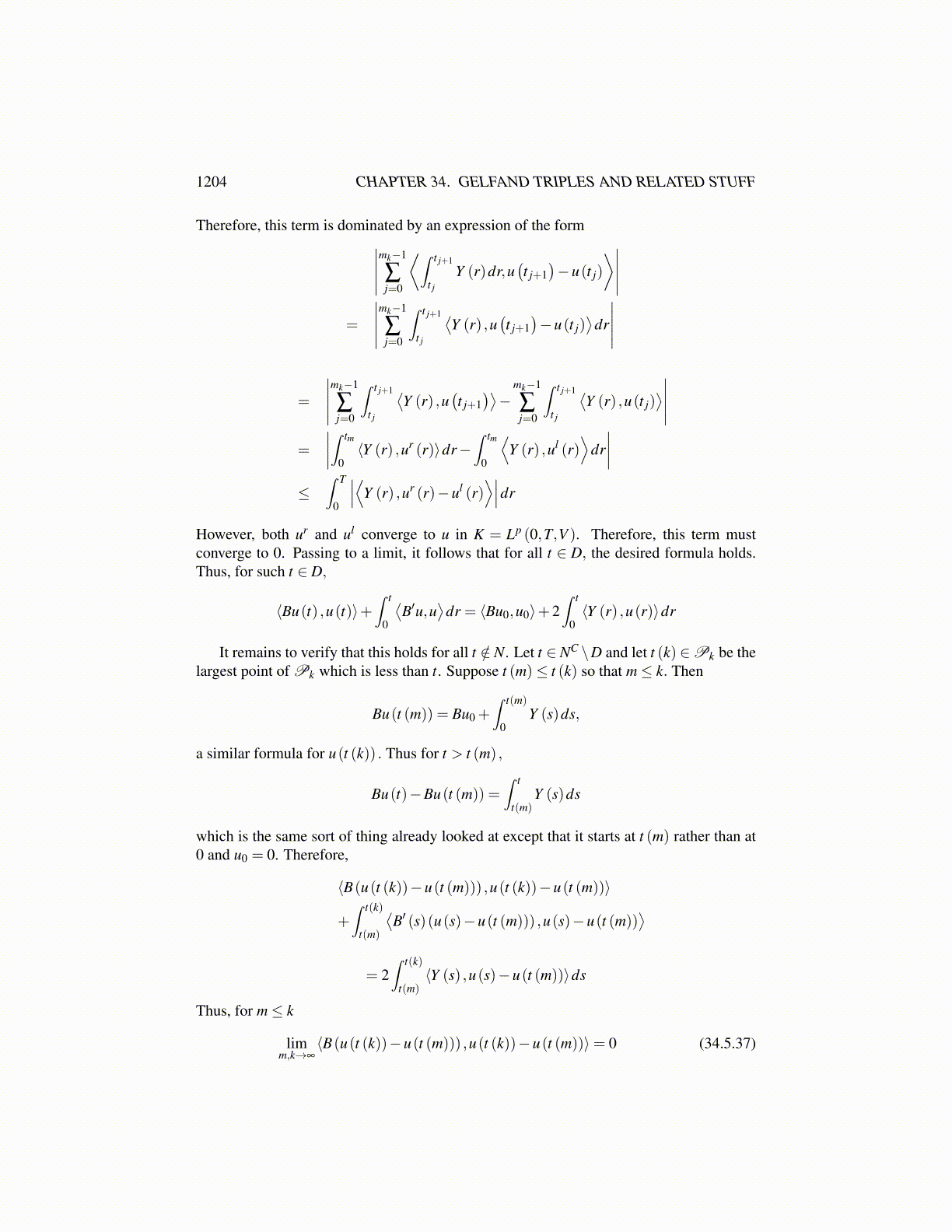
1204 CHAPTER 34. GELFAND TRIPLES AND RELATED STUFF
Therefore, this term is dominated by an expression of the form∣∣∣∣∣mk−1
∑j=0
⟨∫ t j+1
t j
Y (r)dr,u(t j+1
)−u(t j)
⟩∣∣∣∣∣=
∣∣∣∣∣mk−1
∑j=0
∫ t j+1
t j
⟨Y (r) ,u
(t j+1
)−u(t j)
⟩dr
∣∣∣∣∣=
∣∣∣∣∣mk−1
∑j=0
∫ t j+1
t j
⟨Y (r) ,u
(t j+1
)⟩−
mk−1
∑j=0
∫ t j+1
t j
⟨Y (r) ,u(t j)
⟩∣∣∣∣∣=
∣∣∣∣∫ tm
0⟨Y (r) ,ur (r)⟩dr−
∫ tm
0
⟨Y (r) ,ul (r)
⟩dr∣∣∣∣
≤∫ T
0
∣∣∣⟨Y (r) ,ur (r)−ul (r)⟩∣∣∣dr
However, both ur and ul converge to u in K = Lp (0,T,V ). Therefore, this term mustconverge to 0. Passing to a limit, it follows that for all t ∈ D, the desired formula holds.Thus, for such t ∈ D,
⟨Bu(t) ,u(t)⟩+∫ t
0
⟨B′u,u
⟩dr = ⟨Bu0,u0⟩+2
∫ t
0⟨Y (r) ,u(r)⟩dr
It remains to verify that this holds for all t /∈ N. Let t ∈ NC \D and let t (k) ∈Pk be thelargest point of Pk which is less than t. Suppose t (m)≤ t (k) so that m≤ k. Then
Bu(t (m)) = Bu0 +∫ t(m)
0Y (s)ds,
a similar formula for u(t (k)) . Thus for t > t (m) ,
Bu(t)−Bu(t (m)) =∫ t
t(m)Y (s)ds
which is the same sort of thing already looked at except that it starts at t (m) rather than at0 and u0 = 0. Therefore,
⟨B(u(t (k))−u(t (m))) ,u(t (k))−u(t (m))⟩
+∫ t(k)
t(m)
⟨B′ (s)(u(s)−u(t (m))) ,u(s)−u(t (m))
⟩= 2
∫ t(k)
t(m)⟨Y (s) ,u(s)−u(t (m))⟩ds
Thus, for m≤ k
limm,k→∞
⟨B(u(t (k))−u(t (m))) ,u(t (k))−u(t (m))⟩= 0 (34.5.37)